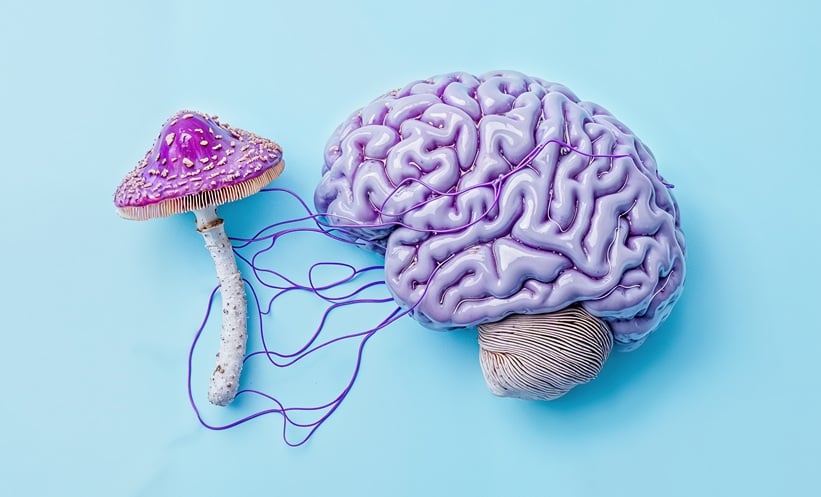THIS YEAR’S 59th European Renal Association (ERA) Congress invited over 1,000 colleagues to a hybrid event in Paris, France, for the first time since the COVID-19 pandemic. Paris has been home to many incredible innovators and has given the world many gems, from the invention of the stethoscope to the science of chemistry. ERA is the largest nephrology congress in Europe, detailing key learning points, late-breaking abstracts, and the latest innovations in the clinical field.
The opening ceremony took us back to the very start of the COVID-19 pandemic in December 2019. Monica Fontana, Executive Director, ERA, Italy, described how the community did not have any idea of how to treat patients with COVID-19 and kidney disease: “We are learning much more every day.” The hybrid format of this year’s congress enabled healthcare professionals around the world to be educated in the latest updates in nephrology.
This year’s congress received an impressive 1,372 abstract submissions from colleagues across 76 countries, an increase from last year’s submissions. Most of the abstracts came from professionals in clinical nephrology, dialysis epidemiology, and renal transplantation. Interestingly, most abstracts came from physicians in Spain, Italy, and France. Sessions included diagnostic tools for acute kidney infection, risk factors in chronic kidney disease, and much more.
Additional content and activities during this hybrid event included late-breaking clinical trial (LBCT) summaries, educational activities, and innovative network opportunities. ERA received over 30 LBCT summaries and the committee carefully selected six of the best submissions for the LBCT session. The clinical trials discussed in the summaries took place all over Europe, notably from Germany, Netherlands, Switzerland, France, and the United Kingdom. Topics covered bio-impedance spectroscopy to preserve residual kidney function in incident haemodialysis patients, and the effects of aspirin in primary prevention of cardiovascular disease in people with chronic kidney disease.
During the welcome ceremony, Annette Bruchfeld, Chair of the Scientific Committee, ERA, Stockholm, Sweden, shared the motto of the congress: innovation, prevention, and preparedness. COVID-19 has resulted in nephrologists and other allied healthcare professionals to adapt and think differently. Innovation, prevention, and preparedness were the chosen values, due to their importance during these trying times. Nephrology needs to constantly innovate; new screening techniques could prevent further illness, and preparedness for the future is important in case of another pandemic or other health crises.
Bruchfeld and other committee members aimed to deliver the best programme by sharing the most important sessions in nephrology. She also thoughtfully considered factors such as gender balance, and this was reflected in the congress itinerary in which half of the sessions were presented by females. The congress kicked off with a welcome lecture by Valerie Luyckx, on “equity, sustainability, and ethics in kidney health.”
Finally, ERA awards were given out to outstanding nephrologists in the field. Corinne Antignac, Laboratory of Hereditary Kidney Diseases, Paris Descartes-Sorbonne Paris Cité University, France, received the ERA Award for Outstanding Basic Science Contributions to Nephrology; Ziad Massy, Division of Nephrology, Ambroise Paré University Hospital, Paris, France, received the ERA award for Outstanding Clinical Contributions to Nephrology; and Andreas Linkermann, Division of Nephrology, Carl Gustav Carus University Hospital at the Technical University Dresden, Germany, was awarded the ERA Award for Research Excellence in Nephrology.
A new change this year to the ERA awards was that the Young Investigators Awards were split into three separate awards. These were awarded to Jennifer Lees, Institute of Cardiovascular and Medical Sciences, BHF Glasgow Cardiovascular Research Centre, University of Glasgow, UK; Turgay Saritas, Department of Nephrology and Clinical Immunology, RWTH Aachen University, Germany; and Francesco Trepiccione, Department of Internal Medicine, Chair of Nephrology, Faculty of Medicine, Second University of Napoli, Italy.
To those who missed this year’s ERA congress, our eJournal covers the key stories, abstract summaries, and interviews in this year’s EMJ Nephrology journal, alongside peer-reviewed articles from global pioneering researchers.
Next year is a big year for ERA as they celebrate a momentous milestone of 60 years. We look forward to attending next year’s congress in Milan. However, for now, please enjoy our highlights and reviews of this year’s congress.
Aspirin and Primary Prevention of Cardiovascular Disease in Chronic Kidney Disease
DURING the 59th ERA Congress, Johannes Mann, Professor of Medicine, University of Erlangen-Nuremberg, Germany, discussed the effects of aspirin in the primary prevention of cardiovascular disease in people with chronic kidney disease (CKD).
Results were derived from a subgroup analysis of the TIPS-3 trial. CKD was defined as an estimated glomerular filtration rate (eGFR) of <60 ml/min/1.73 m2. Participants were randomised to a polypill, which Mann explained was “one pill containing atenolol, ramipril, thiazide, and simvastatin,” “or they were randomised to aspirin or placebo […] In this presentation, I will focus on the aspirin to placebo comparison,” said Mann. Aspirin was given at a dose of 75 mg daily. In total, 5,712 participants were included in this study, and 983 of these presented with CKD at baseline. The mean follow-up was 4.6 years.
For eGFR <60 ml/min/1.73 m2, Mann revealed the benefits of aspirin compared with placebo. Importantly, there was a “reduction in risk for the primary outcome [myocardial infarction, stroke, and cardiovascular death] of 43%.” However, the p value for interaction was 0.14. The researchers then divided the whole population into tertiles: eGFR values of <70, 70–90, and >90 ml/min/1.73 m2. With decreasing eGFR, the benefit of aspirin relative to placebo increased. In this case, the p value for tend was significant (0.02).
The risk of major, minor, and gastrointestinal bleeding was also investigated in all patients. Mann emphasised the “low risk of bleeding and no difference whatsoever in this trial comparing aspirin to placebo, So, bleeding was not a problem.”
Finally, Mann considered the primary design of the TIPS-3 trial, which explored aspirin plus polypill in people with high cardiovascular risk and CKD. For individuals with eGFR <60 ml/min/1.73 m2, double placebo was compared with double active. Relative to double placebo, the double active regimen reduced the risk of the primary outcome by 63%.
In conclusion, data suggest that aspirin may moderately reduce the substantial cardiovascular burden of people with CKD but no history of cardiovascular disease. Furthermore, bleeding risks may not outweigh the cardiovascular benefits of aspirin in CKD.
Dicckopf-3 Predicts Kidney Disease Progression in Children
Urinary Dickkopf-3 (DKK3) protein levels have been shown to predict short term estimated glomerular filtration rate (eGFR) in paediatric patients with chronic kidney disease (CKD). DKK3 is a protein released by the tubular cells whenever tubular interstitial inflammation and active changes in the tubular interstitial compartment are present and in adults. It has been associated with the risk of developing acute kidney injury (AKI), as well as CKD progression at 1 year.
The study, presented by Franz Shaefer, Professor of Paediatrics and Chief of the Paediatric Nephrology Division, Heidelberg University Hospital, Heidelberg, Germany, at the 59th ERA Congress, assessed DKK3 as a predictor of kidney disease progression in children. To do so, two separate cohorts of children was analysed: one from the 4C study, an observational study in 705 children (aged 6 to 17 years at enrolment), and the other from the ESCAPE trial, a randomised clinical trial in 385 children on a fixed dose of angiotensin-converting enzyme (ACE) inhibitors. As the hypothesis was that DKK3 might be a useful indicator of sub-acute changes in eGFR, the authors observed DKK3 urine levels every six months in patients from both studies.
Study results showed that the higher the DKK3 levels, the more rapid the loss of eGFR in both cohorts, independently of the underlying disease, proteinuria, baseline eGFR, obesity, age of the patient, or the presence of hypertension. Additionally, in the 4C study, the DKK3 levels were 50% lower in patients receiving renin-angiotensin system (RAS) antagonists, and patients with higher DKK3 levels were the ones that benefitted most from ACEi and/or angiotensin receptor blockers (ARB) therapy. In the ESCAPE cohort, the authors found that DKK3 levels predicted the nephroprotective effects of the low intensified blood pressure control, which was associated with reduced eGFR loss.
DKK3 is a promising new biomarker that may predict responsiveness to nephroprotective therapies, and may become instrumental in designing risk-adapted personalised medicine approaches in pharmacological nephroprotection.
The THOMAS Study: Early Detection and Treatment for Chronic Kidney Disease
CHRONIC kidney disease (CKD) affects 10% of the population around the world. This condition can get progressively worse and result in kidney failure, as well as other serious comorbidities. Diagnostic tests for CKD usually involve examining the blood and urine for proteins that may indicate the kidneys are not functioning properly. Unfortunately, there is no cure for CKD; therefore, it is critical to detect CKD as early as possible. During the 59th European Renal Association (ERA) Congress, experts shared their findings from the THOMAS study, a randomised study investigating two strategies for early detection and treatment for CKD.
Ronald Gansevoort, Department of Nephrology, University Medical Center Groningen, The Netherlands, shared how screening for CKD has previously been limited to patients with known cardiovascular disease and hypertension; however, this means that many patients do not get screened in time, and this results in delayed treatment and the eGFR is already severely impaired.
Gansevoort and his colleagues aimed to design the first prospective study to investigate the value of screening the general population for albuminuria, the strongest risk factor for CKD progression, and determine the effectiveness of two home-based albuminuria screening techniques. One screening technique involved patients collecting a urine sample at home with a urine collection device, and sending this to a laboratory to measure the albumin creatine ratio. The other screening strategy involved patients measuring the albumin creatinine ratio at home with a dipstick reading using a smartphone application.
The study involved over 15,000 participants, aged 45–80 years, randomised to complete either screening technique. Patients that had confirmed albuminuria were invited for further screening for CKD at a facility. Participants that had high blood pressure, higher cholesterol, and other abnormalities were referred to their GP for treatment. The study discovered that both home-based screening techniques were effective and cost-efficient compared to no screening, and helped prevent the progression of CKD and cardiovascular disease.
In the speaker’s closing remarks, Gansevoort acknowledged that improvements are needed in both techniques. In the strategy using the app, participation was relatively low and had too many false positives, and the implementation of care using the urine collection tube strategy could be improved. Overall, however, the study showed that screening the general population early for albuminuria should be considered.
DIAMOND Trial Examines Management of Hyperkalaemia in Patients with Heart Failure
INVESTIGATORS leading the DIAMOND trial have uncovered promising results regarding the management of hyperkalaemia for patients with heart failure. Hyperkalaemia is an elevated level of plasma potassium in the blood, defined as in excess of >5.5 mmol/L.
This late-breaking clinical trial was presented at the 59th ERA Congress, May 19th–22nd, 2022, which took place both online, and in Paris. Patrick Rossignol, Centre d’Investigation Clinique Plurithématique Pierre Drouin – INSERM CHRU de Nancy, Meurthe-et-Moselle, France; Professor of Therapeutics, University of Lorraine, Lorraine, France; and one of the investigators in the study, led the presentation.
In many cases, for patients diagnosed with, or who have a history of hyperkalaemia, treatment using renin-angiotensin-aldosterone system inhibitors (RAASi) is compromised. The study aimed to discover whether the use of patiromer, a novel potassium (K+) binder, could improve the adherence of RAASi for patients, as well as ameloriating serum K+ levels. The primary endpoint of the study is the mean difference in serum K+ between patiromer and placebo arms. Five secondary endpoints were also considered.
In the DIAMOND trial, around 810 individuals were enrolled, all of whom had heart failure with reduced ejection fraction <40%. Patients who met the screening criteria were entered into a single-blind, run-in phase, and either began or continued with a course of mineralcorticoid receptor antagonist (50 mg/day), RAASi therapy to >50% of target dose, and patiromer (maximum of three 8.4 g packs/day). This phase of the trial lasted for around 12 weeks. Afterwards, patients were double-blind randomised in a 1:1 ratio, and received either continued patiromer or placebo.
Rossignol commented on the challenges of conducting such a trial during the COVID-19 pandemic, but went on to highlight encouraging early results. During the single-blind, run-in phase of the trial, 85% of patients were optimised. Within the placebo group, in which patiromer was withdrawn from patients, Rossignol stated: “All endpoints were statistically and convincingly positive.”
The full results of the DIAMOND trial are yet to be published.
Late-Breaking Results from the BISTRO Trial
DIALYSIS is a necessary procedure for patients whose kidneys have stopped functioning properly. The procedure involves removing excess fluid and waste products from the blood using a machine. Maintaining residual kidney function results in several benefits for patients who require dialysis.
In a late-breaking clinical trial, namely the BISTRO trial, presented at the 59th European Renal Association (ERA) Congress in Paris, France, this year, Simon Davies, Centre for Science and Technology in Medicine, School of Postgraduate Medicine, Keele University, Staffordshire, UK, shared the key research question for this clinical study: can the use of bioimpedance spectroscopy help guide fluid management by avoiding dialysis-related volume depletion?
The design of the study was an open multicentre randomised controlled trial. Researchers evaluated whether taking regular measurements using a bioimpedance device provides information on body composition and improves patient outcomes. The randomisation of patients (n=439) was stratified by centre using a computer-generated concealed method. Davies explained that clinicians were instructed to avoid taking the post-dialysis weight below the normally hydrated weight as determined from the bioimpedance spectroscopy. The team also conducted a cost-effective analysis, which will be available at a later date.
In both the bioimpedance and control group, fluid assessments were taken using standardised proforma monthly for 3 months, followed by every 3 months for 2 years. In the control group, fluid assessments were blinded to the bioimpedance data. To be included in the study, patients had to pass a certain criterion, such as having >500 ml urine volume per day, and had to be able to provide consent to be included in the study. Out of the sample of patients, n=222 were allocated to bioimpedance and n=217 were in the control group. The study had more withdrawals than that expected, a total of 115 patients.
The baseline characteristics (age, sex, ethnicity) at randomisation shows there was no significant difference between the two groups. Results showed death and kidney transplantation were equivalent in both groups, and time to anuria in the bioimpedance group was slightly slower compared to the control group. The rate of developing anuria was much lower than the team had expected. There were a total of 204 adverse events for the bioimpedance group varying in severity; however, this was akin to the control group.
Davies concluded that using bioimpedance compared to the standardised fluid management protocol does not lead to better preservation of residual kidney function. Interestingly, the rate of decline in residual kidney function was less rapid than previous studies have implied, and there was no serious harm using this approach, although larger studies are required to confirm this.








